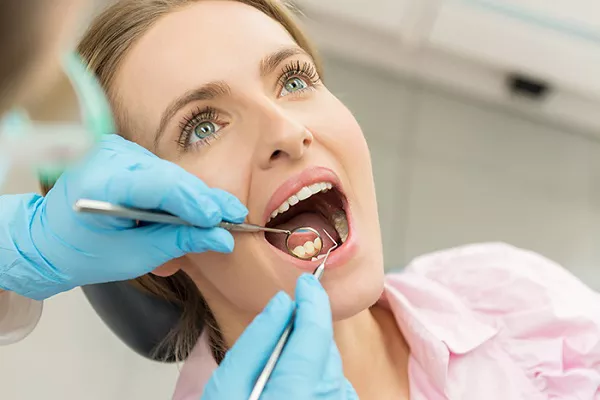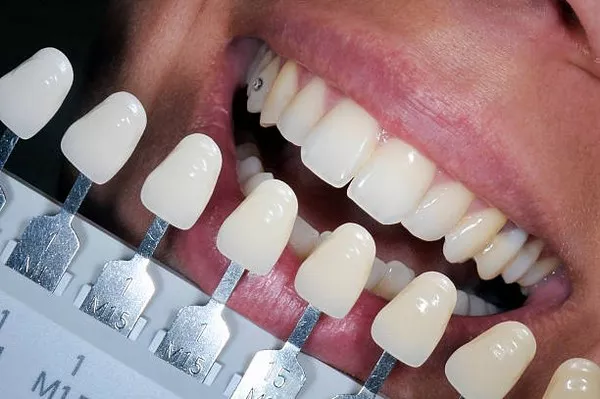Dental braces are an orthodontic treatment designed to correct misaligned teeth and improve oral health and aesthetics. In this article, we will delve into the world of braces, exploring what they are, how they work, and the benefits they offer. Understanding braces is crucial for those considering orthodontic treatment or seeking to enhance their smiles. Let’s explore the topic in detail.
I. Understanding Dental Braces
A. Definition and Purpose
- Dental braces, also known as orthodontic braces, are devices used to align and straighten teeth.
- They are custom-made appliances that apply controlled forces to gradually move teeth into proper alignment.
B. Components of Braces
- Brackets: Small, typically metal, squares that are bonded to the front surface of each tooth.
- Archwire: A thin, flexible wire that connects the brackets and provides the necessary pressure to move teeth.
- Ligatures or O-rings: Elastic bands that secure the archwire to the brackets, aiding in tooth movement.
II. Types of Dental Braces
A. Traditional Metal Braces
- Made from high-grade stainless steel, they are the most common and affordable type of braces.
- Metal brackets are visible but have evolved to be smaller, more comfortable, and less noticeable.
B. Ceramic Braces
- Ceramic or tooth-colored brackets blend with the natural color of the teeth for a more discreet appearance.
- They offer an aesthetically pleasing alternative to metal braces.
C. Lingual Braces
- Placed on the inner surface of the teeth, making them virtually invisible from the outside.
- Suitable for those who desire a highly discreet treatment option.
D. Clear Aligners
- Custom-made, transparent trays that gradually shift the teeth into alignment.
- Removable, convenient, and virtually invisible, making them a popular choice for adults.
III. How Braces Work
A. Applying Controlled Pressure
- The archwire exerts gentle pressure on the brackets, which then applies force to the teeth.
- This pressure gradually moves the teeth into their desired positions over time.
B. Bone Remodeling Process
- The applied pressure stimulates bone cells around the teeth to break down and rebuild, allowing the teeth to move.
- This process, called bone remodeling, enables the teeth to shift and align properly.
C. Regular Adjustments
- Orthodontists schedule regular appointments to adjust the archwire’s tension and monitor progress.
- Adjustments ensure consistent pressure and promote efficient tooth movement.
IV. Benefits of Braces
A. Improved Dental Health
- Properly aligned teeth are easier to clean, reducing the risk of tooth decay and gum disease.
- Improved oral hygiene leads to healthier gums and fresher breath.
B. Enhanced Smile Aesthetics
- Braces correct misalignments, close gaps, and improve overall smile aesthetics.
- A beautiful smile boosts self-confidence and can positively impact personal and professional relationships.
C. Corrected Bite and Jaw Alignment
- Braces address bite irregularities, such as overbite, underbite, and crossbite.
- Proper jaw alignment promotes better chewing function, reduces strain on the jaw joints, and minimizes the risk of TMJ disorders.
V. What to Expect During Braces Treatment
A. Consultation and Treatment Planning
- An initial consultation involves a comprehensive examination, X-rays, and discussions about treatment goals and options.
- The orthodontist will create a personalized treatment plan based on your specific needs and preferences.
B. Braces Placement
- During the placement appointment, brackets are bonded to the teeth using a special dental adhesive.
- The archwire is then inserted into the brackets, and ligatures secure the wire in place.
C. Adjustments and Progress Monitoring
- Regular adjustment appointments are scheduled every few weeks to tighten or replace the archwire.
- The orthodontist monitors the progress, makes necessary adjustments, and ensures the treatment is progressing as planned.
D. Oral Hygiene and Care
- Proper oral hygiene is essential during braces treatment.
- Patients must brush and floss diligently, paying attention to cleaning around the brackets and wires.
E. Retention Phase
- After the active treatment, a retention phase begins to maintain the achieved results.
- Retainers are often prescribed to be worn at specific times to prevent teeth from shifting back to their original positions.
Conclusion:
Dental braces are a reliable and effective method for correcting misaligned teeth, improving oral health, and enhancing smile aesthetics. Understanding the different types of braces, the treatment process, and the benefits they offer can help individuals make informed decisions about their orthodontic journey.
With advancements in orthodontic technology, braces have become more comfortable, discreet, and customizable to suit individual needs. By working closely with an experienced orthodontist and following their instructions, patients can achieve a beautifully aligned smile.
Remember, braces treatment requires patience and commitment, but the long-term benefits are worth it. Consult with a qualified orthodontist to determine the best braces option for you and embark on a transformative journey to a healthier, more confident smile.
Related Topics:


























